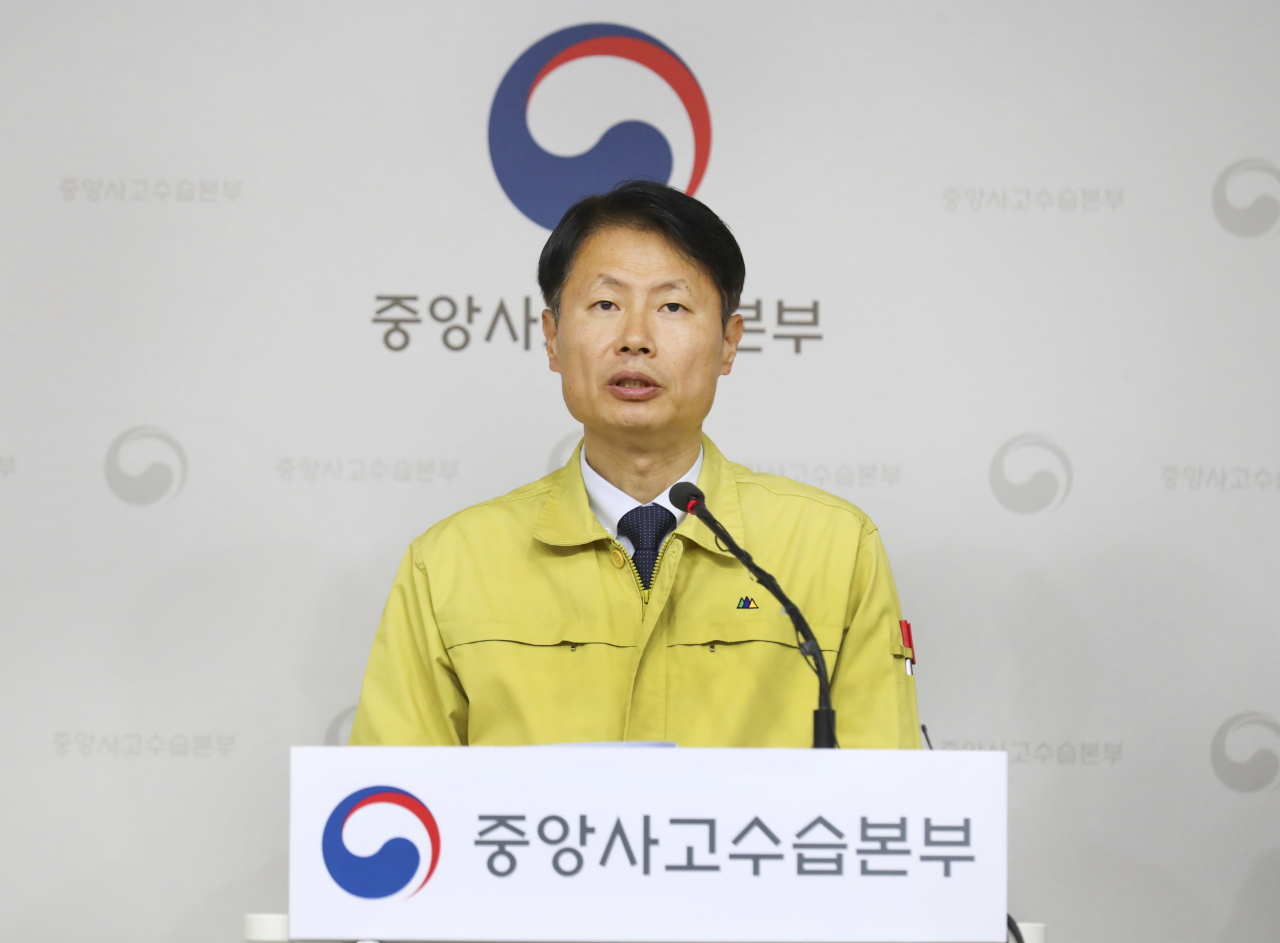 |
Vice Health Minister Kim Gang-lip speaks during a briefing on Monday. (Health Ministry) |
As health authorities struggle to determine how the country’s latest patients contracted the virus without China ties or contact with reported patients, the government on Monday once again vowed “preemptive measures” to stop the virus from spreading to the wider public.
The Korea Centers for Disease Control and Prevention confirmed the 30th case of COVID-19 -- the novel coronavirus which originated in Wuhan, China -- on Monday morning, as a woman, 68, is believed to have been infected by her husband who was diagnosed a day earlier.
The Ministry of Health and Welfare, which oversees the government’s epidemic response, said in a Monday briefing that stricter screening was necessary as cases began to emerge in neighboring countries in which transmission routes could not be traced.
“COVID-19 is highly contagious even in initial stages when symptoms are mild,” Vice Health Minister Kim Gang-lip told reporters. “While containment efforts thus far centered on preventing the virus from entering the country, preemptive measures will be implemented from this point on to sustain community transmission.”
Kim said pneumonia patients with no discernible links to the virus will also be tested for infection, if necessary, to allow for prompt detection and management of cases.
To prevent transmission in hospitals, visits will be restricted and health care workers with a recent China travel history will be required to take a leave of absence for at least 14 days.
The vice minister said epidemiological research was still underway to identify how and where the new patients were infected and whether they had transmitted the virus to anyone else.
Meanwhile, the public is advised to take precautions by washing their hands, informing district health institutes of suspected infection and avoiding unnecessary visits to hospitals or nursing homes, he said.
Over the weekend, South Korea saw its first case with an unclear transmission path when a man, 82, tested positive for the virus despite not having known symptoms. He was first taken to the emergency room at Korea University Anam Hospital in Seongbuk, a northern Seoul district, on Saturday for signs of a heart attack.
Medical staff took the liberty of testing the 82-year-old for the virus when his chest scan showed patterns of pneumonia. But under current guidelines, the patient falls outside of those subject to screening, as he has neither had symptoms nor been to China recently.
Choi Jae-wook, chairman of the Korean Medical Association’s Scientific Review Committee, told The Korea Herald that doctors reported frustration at lack of a centralized response from the government.
Choi, who is a preventive medicine specialist at Korea University Hospital, said that health workers at clinics and hospitals across the country were still waiting for government instructions on day-to-day decisions such as which patients are to be tested, where test results are to be sent and how the fees will be covered.
“The most recent development indicates community spread is already in progress,” he said. “Even if the measures were instituted now, it’s too late to call them ‘preemptive’ by any standard.”
“Without the doctor’s call, the patient in 29th case would have been misdiagnosed and completely escape the watch,” he said. “Government cannot leave such decisions up to individual doctors.”
By Kim Arin (
arin@heraldcorp.com)







![[Today’s K-pop] Blackpink’s Jennie, Lisa invited to Coachella as solo acts](http://res.heraldm.com/phpwas/restmb_idxmake.php?idx=644&simg=/content/image/2024/11/21/20241121050099_0.jpg)
